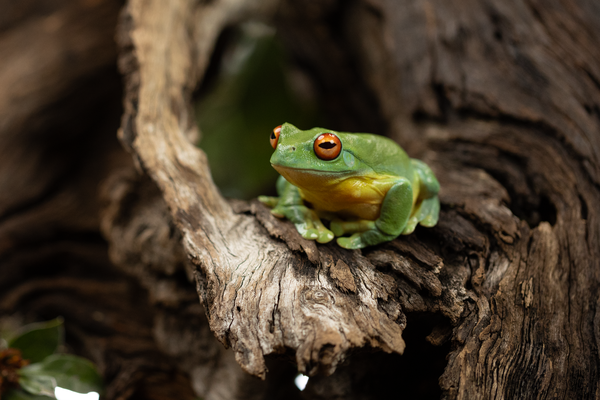Opening our doors
The curator of the Australian Museum, William Sheridan Wall, must have been quite relieved to receive the letter from Mr Beaumont of the Botany Zoological Gardens offering to remove the ‘living’ animals from the Australian Museum that ‘coming week’. It was October 1854, and Wall was in the middle of hectic preparations for the opening, less than four weeks away, of the first exhibition ever to be staged at Australia’s first museum. On 14 November, the Governor-General, Sir Charles Fitzroy, would be arriving to officially open an exhibition of ‘natural and industrial products’ from New South Wales which were to be displayed in the Museum’s new ‘Hall’ prior to the dispatch of some of these prized products to the Paris International Exhibition of 1855.
Paris
The tradition of international exhibitions was fairly new. The first had been staged in London in 1851 with such great fanfare that Napoleon III of France immediately put into motion plans for an even greater display to be held in Paris in May 1855. In early 1854 the Australian Museum’s Trustees had been invited by the Colonial Secretary and the local Chairman of the Paris Exhibition Commission not only to contribute their ‘duplicate specimens of Natural History’ to a pool of other colonial contributions destined for France, but also to afford space within the newly constructed museum to stage an exclusive Paris preview.
The new museum building facing William Street then consisted of a sky-lighted room with a gallery round it and some adjacent domestic quarters to house staff. The collections had been moved to the new building in 1849, followed by the first public function held in 1852 – a ball to celebrate the arrival of the first mail steamer, RMS Chusan. The display hall, still lacking permanent showcases and cabinetry and only recently having gained a complete roof, housed a selection of collected specimens. Lobbying in the meantime continued apace for funds to complete the job.
Indefatigable
So by October 1854 the ‘indefatigable’ Curator was attempting to manage the Museum’s stuffed and stored specimens on a daily basis while also juggling a weekly parade of workmen, tradespeople, Trustees, visitors, staff and their resident families, and a motley but high maintenance collection of live animals, including most notably a tigress and a grizzly bear.
Having temporarily cleared the decks by mid-November, Wall managed to see that the inaugural exhibition in the Great Hall (later, the Long Gallery and currently Skeletonson the ground floor and Planet of Minerals on the mezzanine) opened on time.
The local Paris Exhibition Commissioners reported that they were at first anxious about the general ‘indifference’ of the ‘colonists’ in the lead up to the exhibition and the consequent ‘inadequacy’ of some of their contributions. There was also an annoying shortage of labour caused by the mass exodus of workers from town and country to the goldfields.
Finally though an eclectic array of weird and wonderful offerings from all over the colony had been assembled in a hall impressively decorated with classical statue casts and flags. The official catalogue held in the Museum’s Research Library records the complete list of exhibits including: paintings, busts, wood carvings, photos, publications, native woods, mineral and gold specimens, textiles, colonial bricks, chemicals, industrial models, preserved meats, colonial wines, botanical specimens, kangaroo boots, dog carts, artificial teeth, Australian sauce, a working model of an apparatus for ‘extracting Tallow from Sheep and Horned Cattle’ and even ‘gold from a Duck’s Gizzard’. There was literally something for everyone.
Medals
Relieved perhaps that it had finally taken shape, the Exhibition Commissioners decided to present commemorative silver and bronze medals to the Museum Trustees for hosting the event. The multi-tasking Mr Wall was also one of the notable individual medal winners, being rewarded generally for his ‘Services’ and specifically for his work rendering, preparing and displaying a sperm whale destined for eventual exhibition in the new Museum.
A fortnight after the opening, the Illustrated Sydney News of 25 November reported ‘The New South Wales Exhibition still continues daily to attract a considerable number of spectators eager to gain an insight into the hitherto unknown resources of their adopted land, and whose interest in the exhibition is evidently the result of a deeper feeling than mere curiosity.’
The success of the exhibition was a sign of the times. It reflected the general spirit of excitement and intellectual curiosity about the young colony ignited by the gold fever spreading across it. It also marked a watershed in the Museum’s development. Before the exhibition was staged, the Museum and its collections had largely been the domain of the Trustees and a handful of scientific and gentlemen collectors. The publicity now generated though, domestically and internationally, by showcasing the nation’s wealth within its newly erected walls marked the Museum out as a beacon of Sydney’s cultural and educational landscape.
When the finishing touches to the William Street site were finally completed and it opened to the public on a permanent basis in May 1857, about 10,000 Sydneysiders and tourists pressed through its doors in the first week. Today, 160 years after staging its first official exhibition, the Museum is still inspiring that same spirit of wonder and curiosity within its walls.
A 21st century ‘New Museum’ project has been announced to redesign and expand the floor space for exhibitions and create a new entranceway to improve visitor access. Part of this redevelopment will focus on the historic Long Gallery, which will once again showcase an impressive array of rare and significant objects symbolic of the great wealth of specimens and scientific know-how that Australia’s first museum has come to represent.
This is a longer version of a story that first appeared in Explore 36(2), August 2014.













